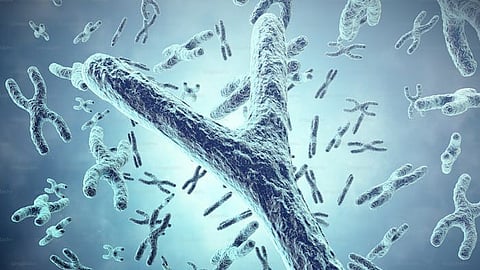

A groundbreaking new technique invented by researchers at the USC Dornsife College of Letters, Arts and Science may revolutionize the field of synthetic biology. Known as CReATiNG (Cloning Reprogramming and Assembling Tiled Natural Genomic DNA), the method offers a simpler and more cost-effective approach to constructing synthetic chromosomes. It could significantly advance genetic engineering and enable a wide range of advances in medicine, biotechnology, biofuel production and even space exploration.
CReATiNG works by cloning and reassembling natural DNA segments from yeast, allowing scientists to create synthetic chromosomes that can replace their native counterparts in cells. The innovative technique enables researchers to combine chromosomes between different yeast strains and species, change chromosome structures, and delete multiple genes simultaneously.
The study was published Dec. 20 in Nature Communications.
CReATiNG makes difficult research easier, cheaper
The field of synthetic biology has emerged as a way for scientists to take control of living cells, such as yeast and bacteria, to better understand how they work and to enable them to produce useful compounds, such as new medicines.
However, there have been no alternatives — until now. “CReATiNG offers an opportunity to use natural pieces of DNA as parts to assemble whole chromosomes,” said Agilent postdoctoral fellow Alessandro Coradini, who was study first author.
The method makes advanced genetic research more accessible by significantly lowering costs and technical barriers so scientists can unlock new solutions to some of the most pressing challenges in science and medicine today.
CReATiNG could help medicine, space exploration and more
The findings are particularly significant for their potential applications in biotechnology and medicine. CReATiNG could lead to more efficient production of pharmaceuticals and biofuels, aid in the development of cell therapies for diseases like cancer and pave the way to methods of environmental bioremediation, such as creating bacteria that consume pollutants.
The method might even extend to helping humans live for long periods in space or other harsh environments. Scientists could one day use CReATiNG to develop microorganisms or plants that could thrive in space stations or during long-distance space travel, though the researchers caution that this would require much future research.
One of the most striking aspects of the study, according to the researchers, is how rearranging chromosome segments in yeast can alter their growth rates, with some modifications resulting in up to a 68% faster or slower growth. This discovery highlights the profound impact that genetic structure can have on biological function and opens up new research pathways to further explore these relationships. (VP/Newswise)
